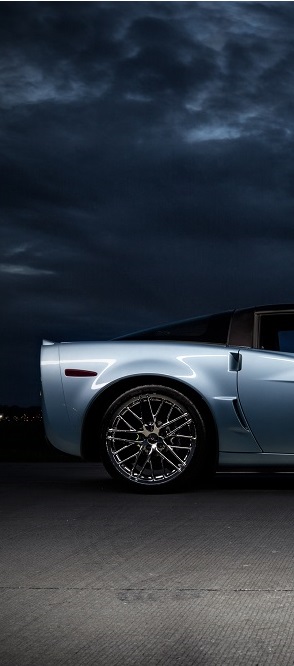

Dodge Challenger – 1970 to 1974—Generation 1
Dodge played with the Challenger name in 1958, offering the Silver Dodge Challenger Club Coupe, as an option package for the Coronet, but Dodge used the moniker in 1970 for a new model. The 1970 Dodge Challenger is a pony car and is on the Chrysler “E” body platform, the same as the slightly shorter Plymouth Barracuda although it takes its styling from the Charger.
Carl Cameron designed the Charger and used old sketches of a prototype Charger to create the exterior of the Challenger. The car is a late arrival to the pony class, but this latecomer was supposed to dominate the market in the muscle car segment. By 1971, muscle car sales began a downward spiral, and although in 1973, the Challenger sales picked up with 27,800 units sold, production ceased, midway through 1974, with a total of 165,437 Challengers leaving the assembly line in the 4½ years of the first generation.
1973 Challenger
During the first year of production, the Challenger offered, as the entry level, a six or a V8 engine to choose from. The Challenger R/T is the power option and would have a 318-cubic-inch (5.2L) V8 mounted by a two-barrel as the standard engine. Either choice was available as a hard-top or a convertible. There’s also a further option of the Challenger SE or Special Edition, which includes a small “formal” rear window, leather seats, and an overhead console with three warning lights for low fuel, seat belt and door ajar warnings to personalize your ride, which you could order on the base (1970 only) as well as the R/T.
In 1970, the optional V8 engines included the 340-cubic-inch (5.6L), 383-cubic-inch (6.3L), and for ultimate power, the 440-cubic-inch (7.2L) or the 426-cubic-inch (7.0L) are also on the table. The basic transmission is a three-speed manual, except for the 383 which bolted to the TorqueFlite automatic transmission. The four-speed manual transmission was for any engine except the 225-cubic-inch six and the 383.
The new Challenger Coupe became the base model for 1971 and is a bare bones unit with rear quarter windows that don’t open and a plain black steering wheel with a horn button. The performance model is still the R/T, which stands for “rapid transit” and came with the 383 Magnum V8 under the hood as the standard offering, but it had lower compression and wasn’t as rapid as the previous year’s.
The 383 for ’71 developed 300 bhp (223.7 kW), a drop of 35hp (26.1 kW) from the previous version. The optional 440 Magnum developed 375 bhp (279.6 kW) or produced up to 390 bhp (290.8 kW) with the six pack for the 440-cubic-inch version. The 426 Hemi is at the top of the list with 425 bhp (316.9 kW) to get you from A to B quickly. The shaker hood wasn’t an option for the Challenger after the 1971 model year. The R/T for ’72 had no R/T badging and was now called the Rallye and sported simulated vents on the fenders. This power package included the Rallye gauges with a speedometer that read 150 mph (240 km/h) and an 8000rpm tachometer, but for ’73 and ’74, the tachometer only went to 7000rpm.
1973 Challenger
Republished by Blog Post Promoter











